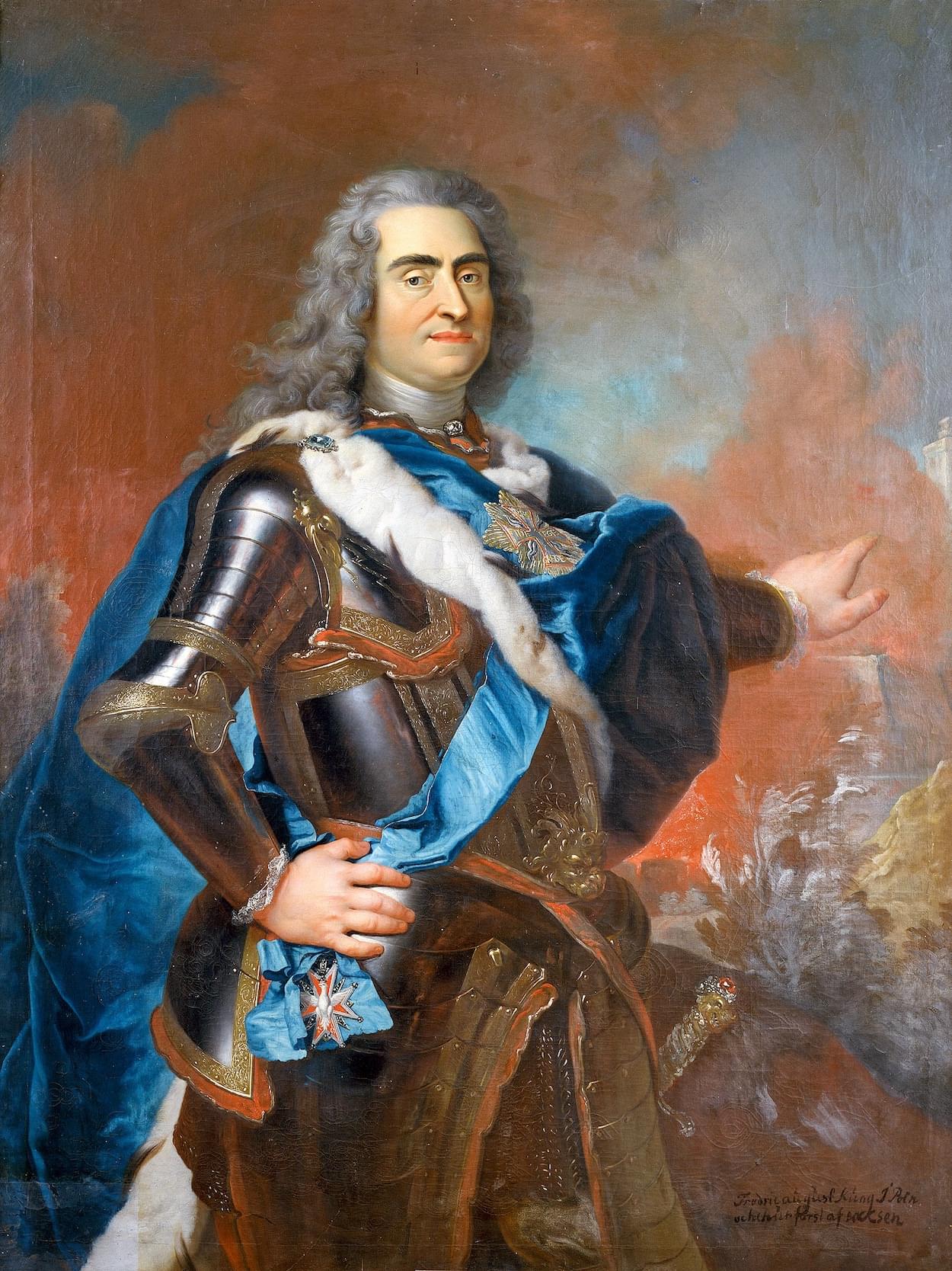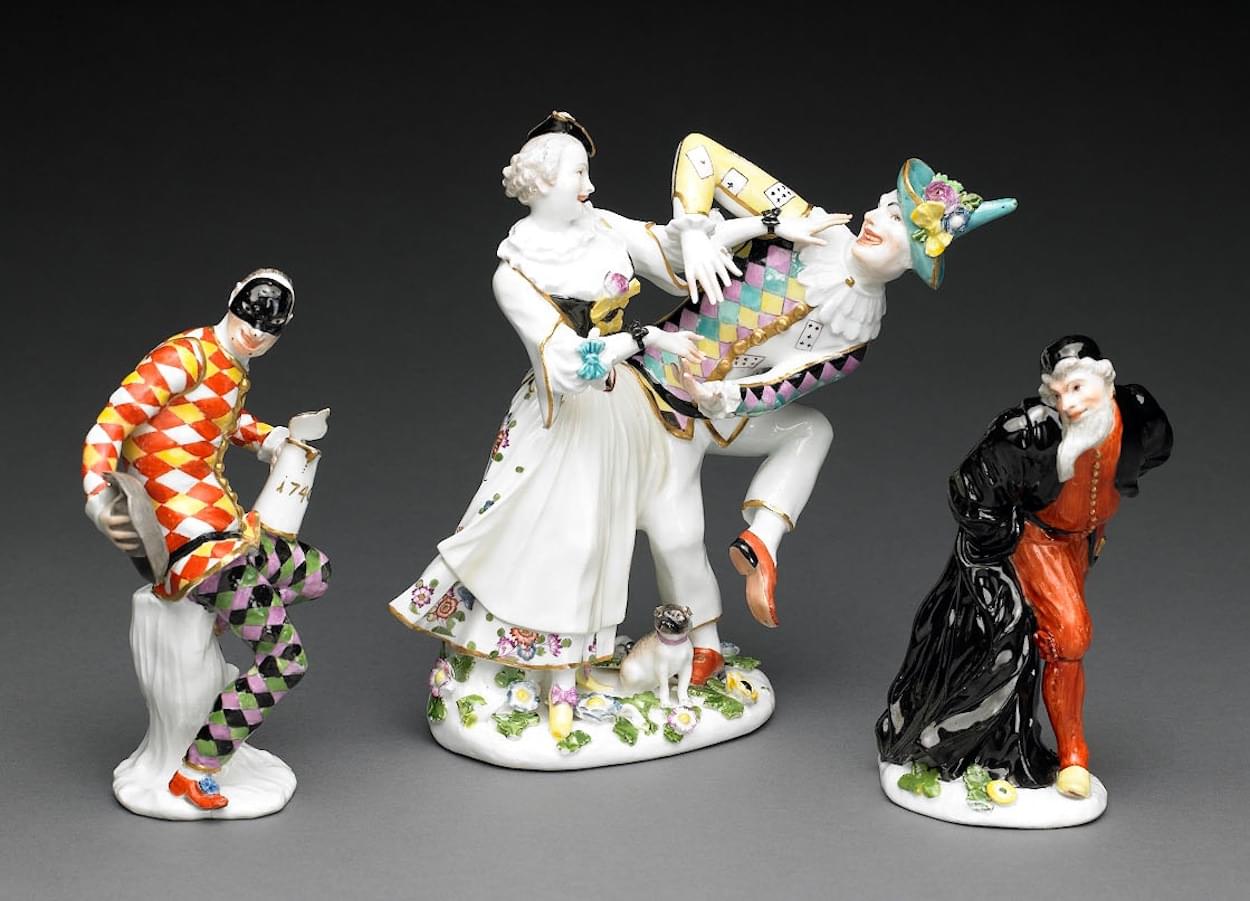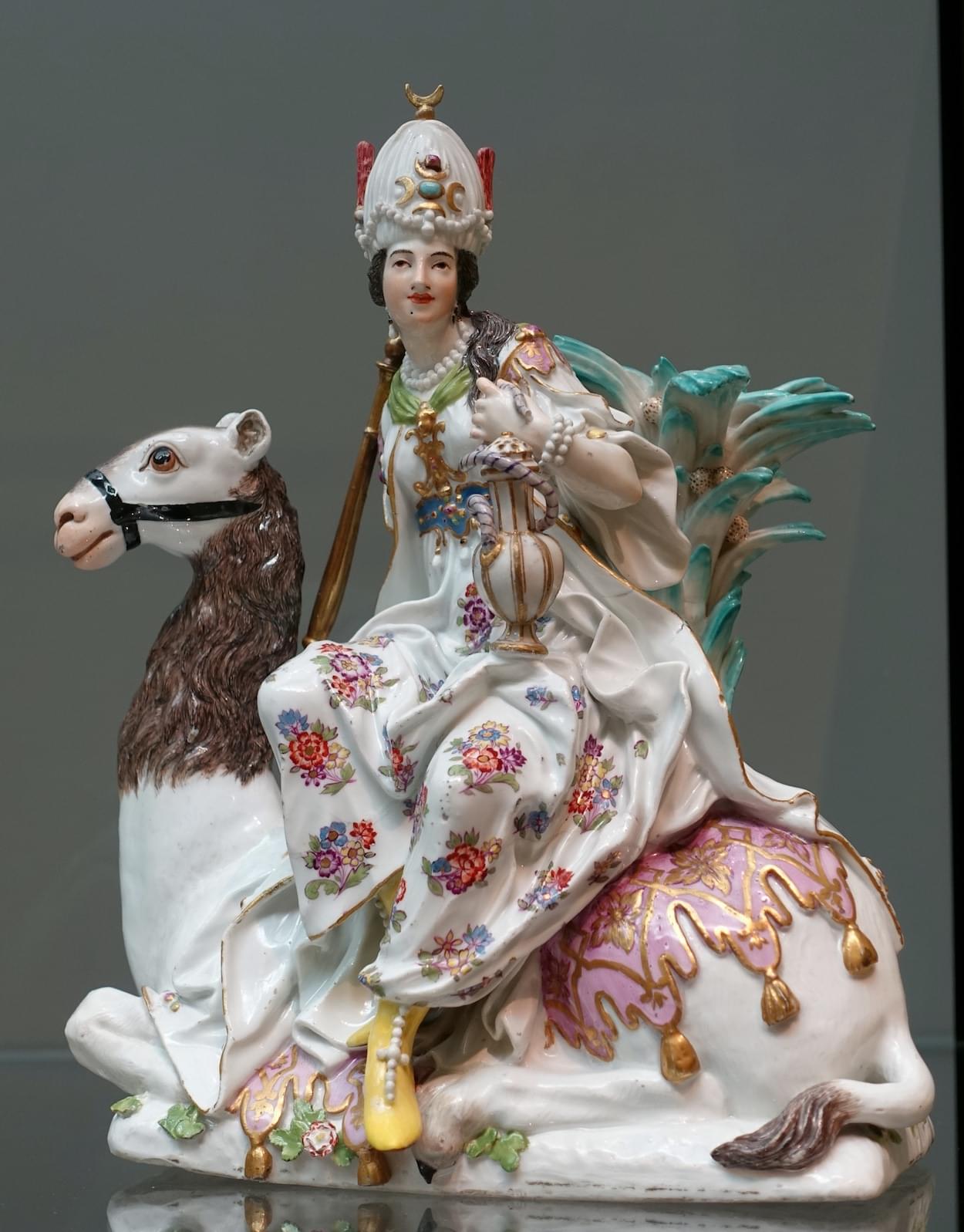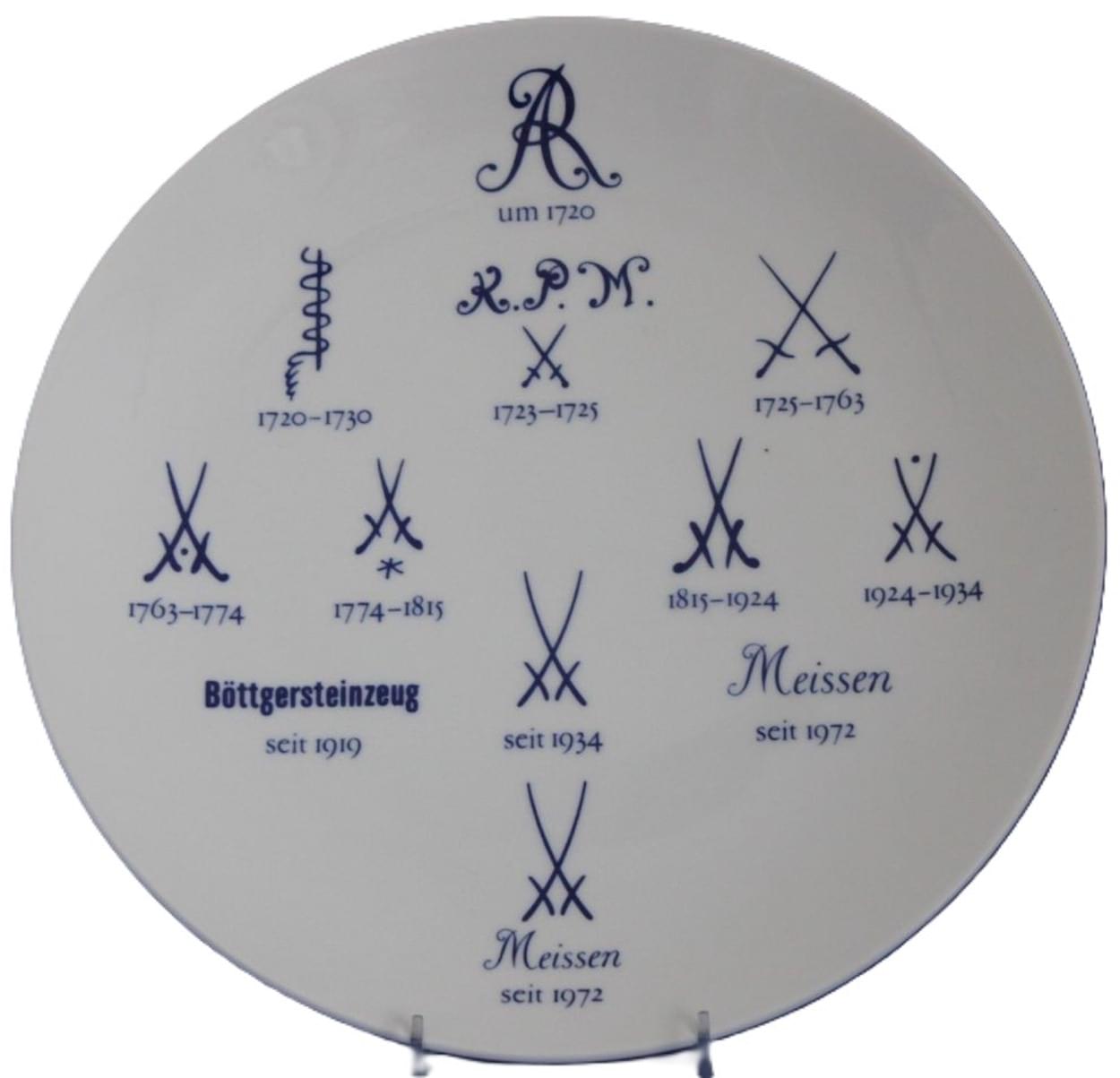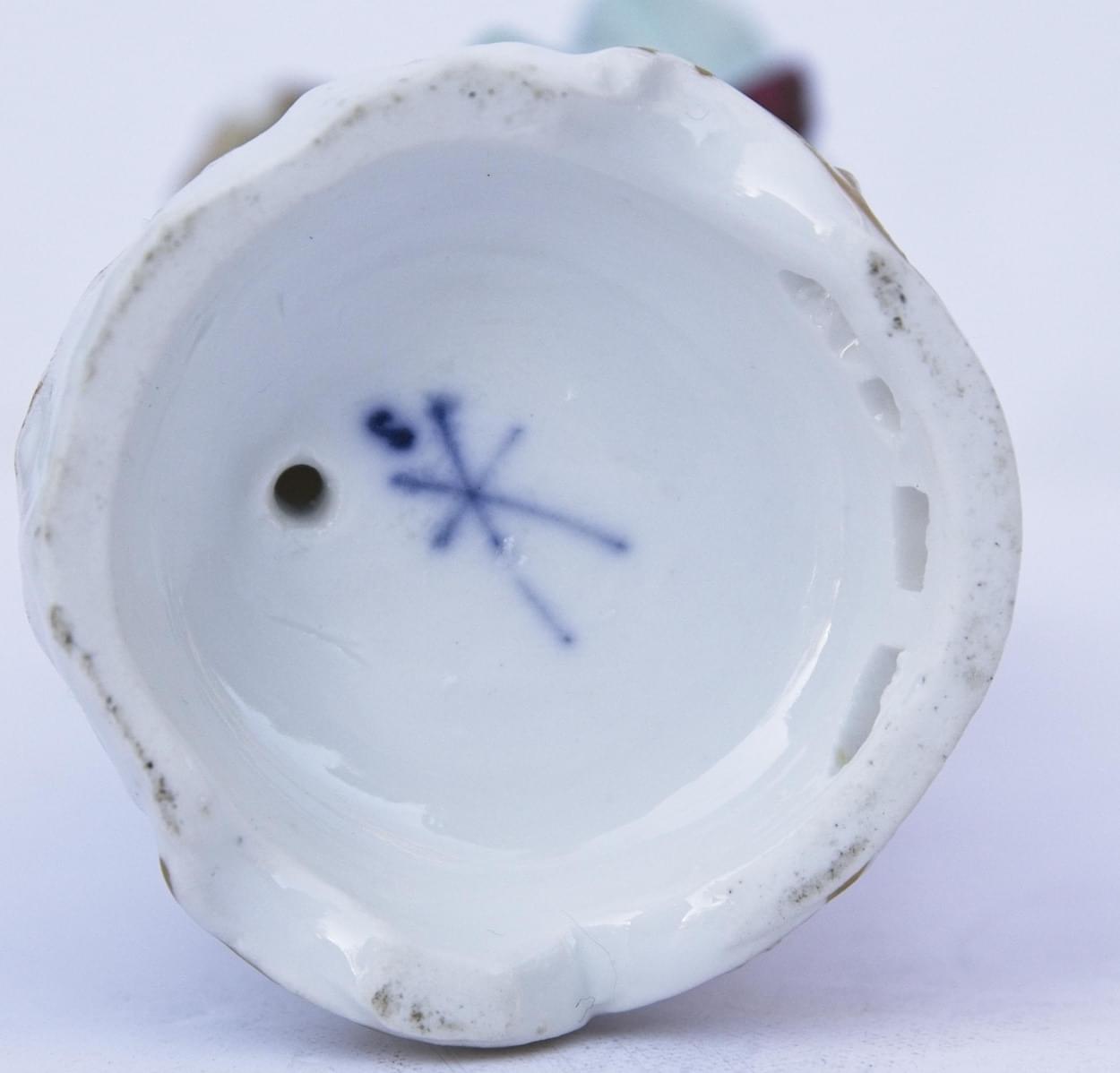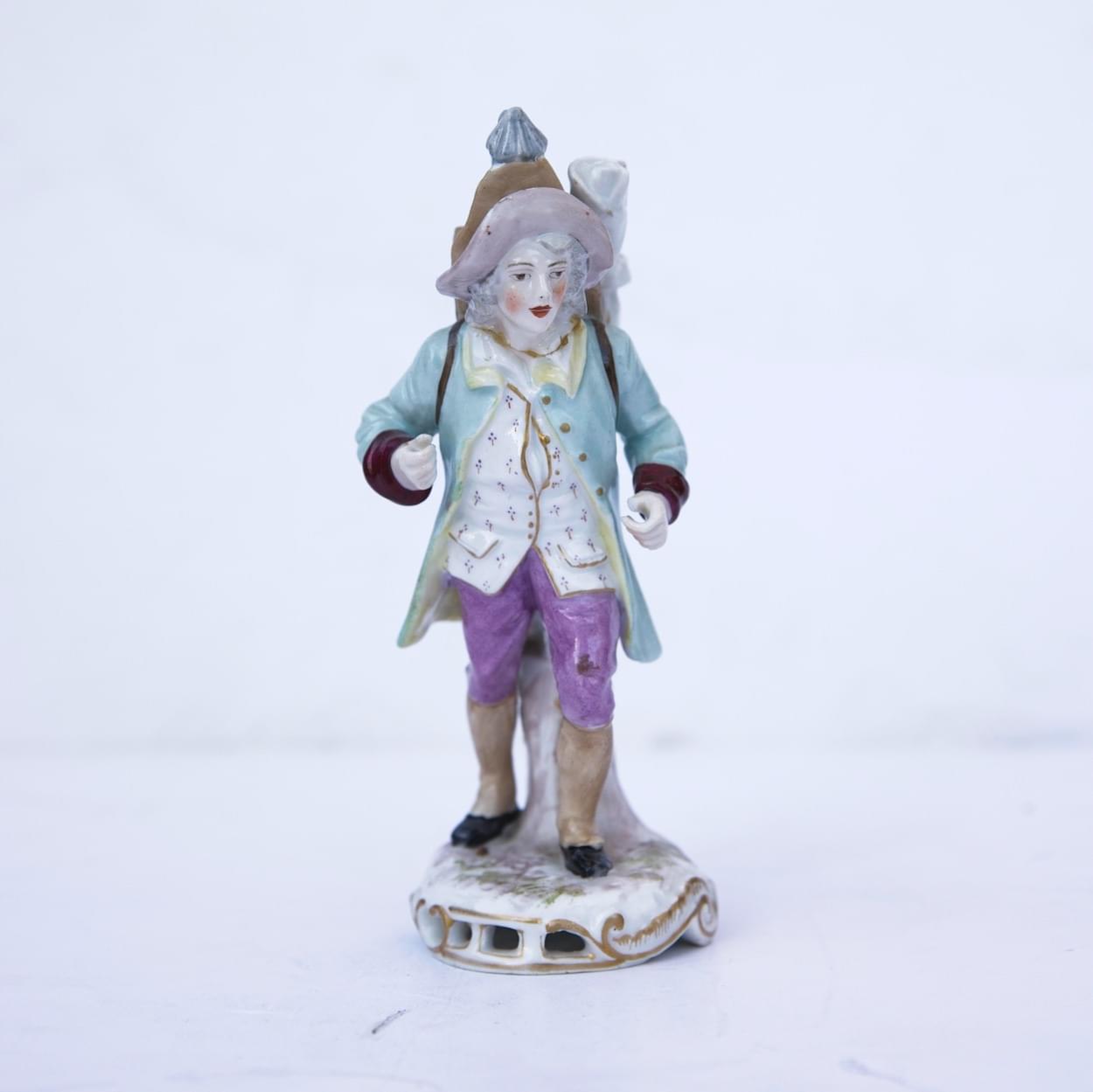CHRISTLETON
Curios and Curioser

BY PHILIP HARLAND
‘Fit for a King’
The Story of White Gold
Once upon a time a great and powerful king, called Augustus the Strong lived in a magnificent castle in the German town of Albrechtsburg. Augustus was so wealthy that he could not find enough beautiful objects to buy so, one day in 1710 he employed a local alchemists, locked him in his castle and commanded him to produce a new and precious material. Before long his ‘white gold’ was used as a virtual currency throughout Europe and beyond. This was the fairy tale beginning of Meissen porcelain.
-

Albrechtsburg Castle
-

Augustus II 'The Stong'
The creation of fine porcelain in Europe was truly a massive coup for King Augustus II; the story goes that he rescued an alchemist called Johann Friedrich Boettger from the grips of a neighbouring king, Frederick I of Prussia after Boettger had promised hubristically, and then failed, to make Gold. Bewitched, as he was by the milky white gloss of recently imported ceramic from China, Augustus saw an opening to create his own version of ‘white gold’. He was so anxious to guard the secret porcelain formula (which used clay and kaolin) that installation of his mini factory at Albrechtsburg castle, although basically an empty shell, provided the perfect, fortified environment.
-
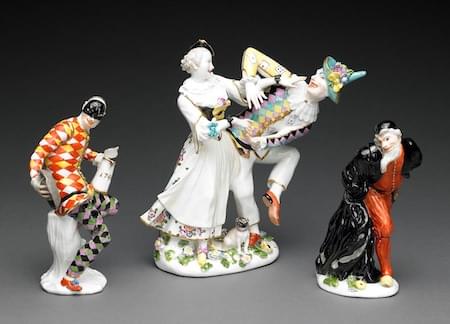
Porcelain figures by Johann Kaendler c.1750
-
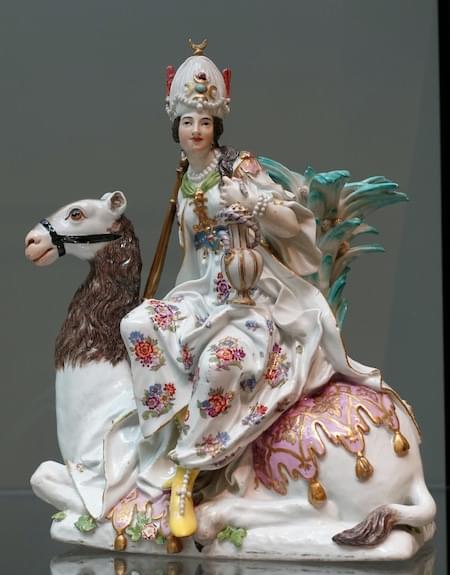
Porcelain figure by Johann Kaendler c.1750
Over the next few decades, Meissen porcelain became a symbol of financial and social success. To own a dinner service or even a figurine made by, for example superstar potter Johann Joachim Kaendler (1706-1775) was the height of good taste, the proud owner able to display the extraordinary decoration and coloured enamels before showing off the famous crossed swords mark underneath!
-
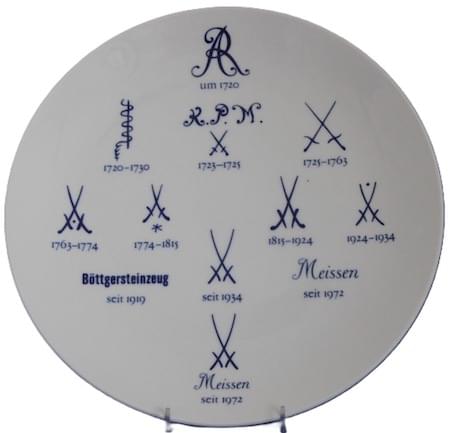
Meissen Backstamps
-

Finely painted Teapot, 1725
Branding became ever more important as the riddle of porcelain alchemy was solved by other entrepreneurs, most importantly in Sèvres, France. The crossed swords mark went on, however, to deceive and mislead those who coveted a Meissen artefact; some factories, like that of Edmé Samson in Paris guilelessly produced well-crafted porcelain with any number of famous ‘brand’ names, including lookalike Meissen.
-
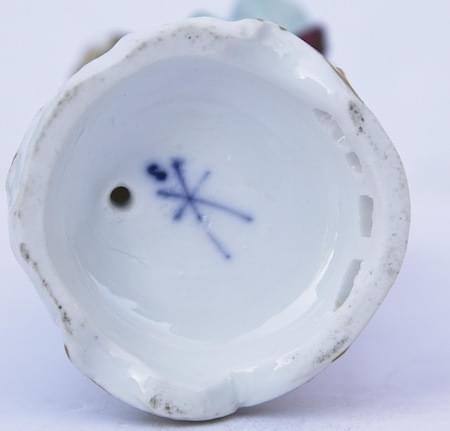
-
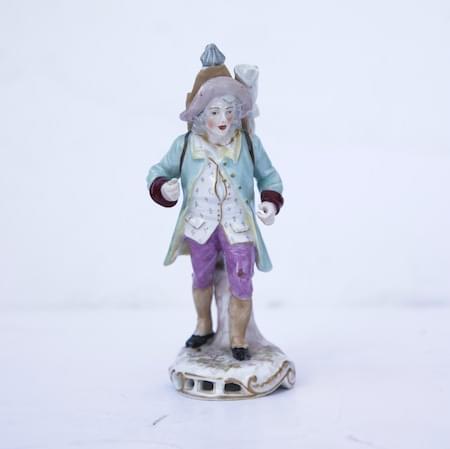
A 19th century porcelain figurine made by Edmé Samson of Paris and its ‘fake’ Meissen
Meissen has not lost its seductive allure, however best advice in this fake-filled market is ‘caveat emptor’. The chances of coming across 18th century Meissen are extremely rare; most of those early pieces are in museums or, possibly locked away in a private collector’s vault. Nevertheless, superb porcelain under the generic name of Dresden is still to be found and even Edmé Samson copies are not to be sniffed at. Advice to the potential buyer: whenever possible buy only perfect, undamaged porcelain. Figurines, particularly often have repairs or damage which can be tricky to identify. Most sellers will mark ‘A/F’ on the price label to indicate that there is some damage. On the plus side, the demand for 19th century porcelain (especially figurines) is much lower than it was a decade or two ago so, with care you can find beautiful, hand-painted artefacts at ridiculously low prices.

